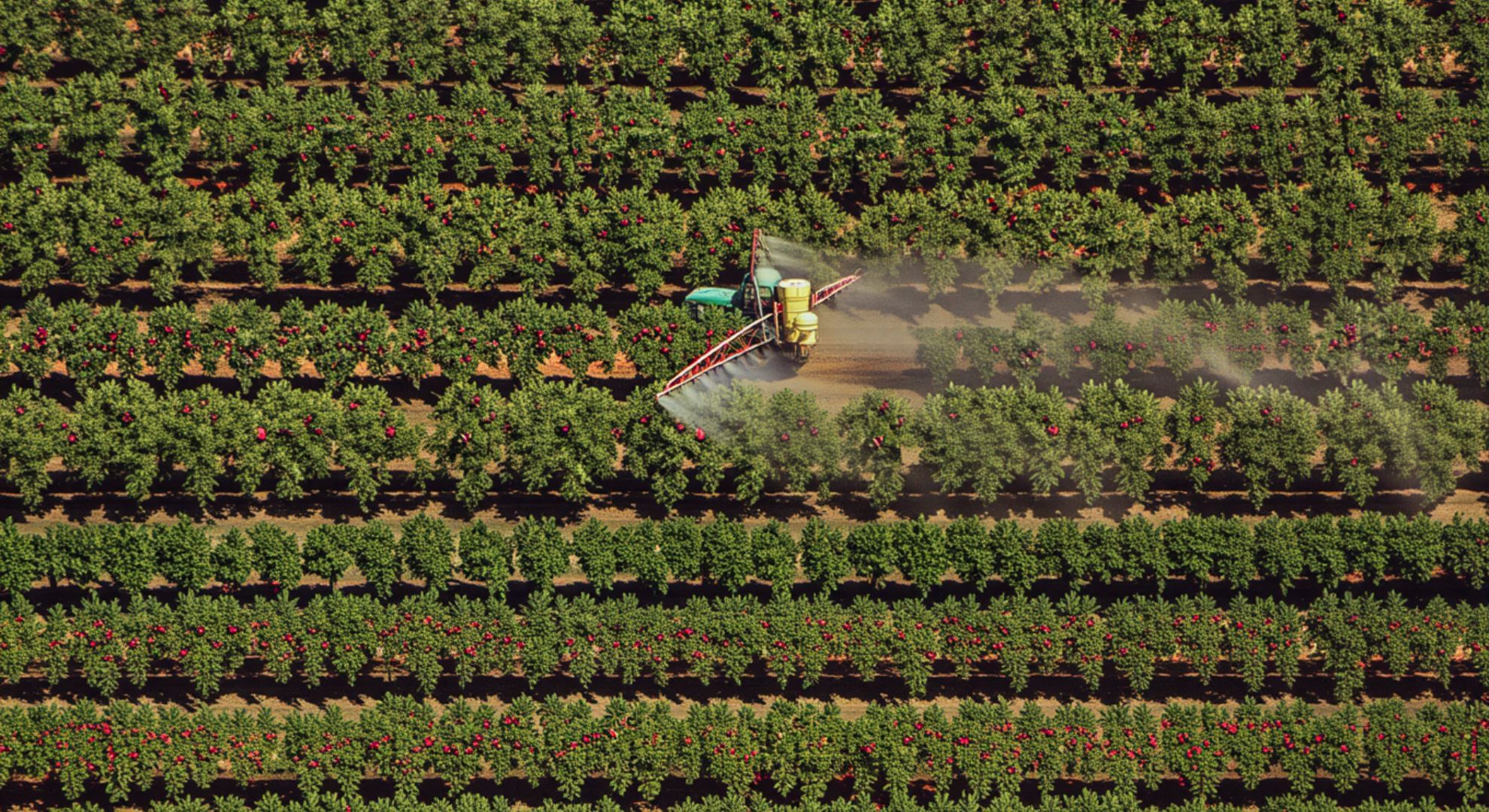Californian orchards turn out crisp, photogenic fruit that feels reassuring, yet the chemistry behind that shine is more complicated than many shoppers realize. Across the Atlantic, Europe has tightened its rules on certain crop chemicals, while U.S. and California regulators often take a different path. That split means some conventional apples raised in the Central Valley can legally carry traces of substances that Europe no longer permits.
For consumers, this isn’t a panic moment so much as a reminder that regulatory science is contextual. Risk is shaped by how much of a chemical remains on the fruit, how people eat it, and the safety margins agencies build into their limits. The same molecule can be judged acceptable on one continent and unacceptable on another, depending on underlying assumptions.
Why rules diverge
Europe tends to apply the “precautionary principle,” giving heavier weight to plausible long‑term hazards. U.S. law focuses intensely on exposure, setting tolerances so that even frequent eaters stay far below risk thresholds. California layers on its own rules, including Proposition 65 warnings and additional state reviews.
“Different methods, different outcomes,” is a phrase you’ll hear from risk analysts. “When evidence is uncertain, choose caution,” is the counter from public advocates. Both systems aim to protect health while keeping farming viable.
What can show up on apples
A few active ingredients illustrate the trans‑Atlantic split. Diphenylamine (DPA) is a postharvest treatment used to prevent storage scald in conventional apples. The European Union withdrew approval, while U.S. and California rules still allow its use. Mancozeb, a broad‑spectrum fungicide, is also out in Europe but remains available to American growers. Carbaryl, used for thinning and pest control, is not approved in the EU yet can still appear in U.S. orchard programs. And imidacloprid, a neonicotinoid, faces tight EU outdoor restrictions while remaining an option in California’s pest toolbox.
Here is a simplified snapshot of regulatory differences:
| Substance | EU status | California status | Typical apple use | What this means for shoppers |
|---|---|---|---|---|
| Diphenylamine | Not approved | Allowed for postharvest | Storage scald inhibitor | Possible residues on long‑stored fruit |
| Mancozeb | Not approved | Allowed with restrictions | Fungicide for scab and blights | Residues possible after preharvest sprays |
| Carbaryl | Not approved | Allowed with restrictions | Thinning and insect control | Residues possible depending on timing |
| Imidacloprid | Outdoor field uses heavily restricted | Allowed per federal/state labeling | Systemic control of sucking pests | Residues possible when used preharvest |
USDA’s long‑running Pesticide Data Program regularly finds low‑level residues on U.S. produce. Most results come in well below federal tolerances. Europe may set lower benchmarks or revert to minimal default limits once a substance loses approval.
What growers say
California producers face pest pressure that doesn’t pause for policy debates. “We follow the label and all state rules,” is a common refrain in grower meetings. “If there’s a safer, effective alternative, we switch,” is another line you hear in extension workshops. Inputs cost money, and using less is a competitive advantage.
At the same time, integrated pest management has pushed many orchards toward more targeted sprays, better monitoring, and nonchemical tactics. The aim is to hit pests at their weakest point and leave fewer residues at harvest.
How shoppers can dial down exposure
- Choose organic apples when it fits your budget and preferences.
- Wash and rub fruit under running water to remove surface residues.
- Peel when desired, recognizing you’ll lose some fiber and phytonutrients.
- Vary the fruits you eat so no single item dominates your weekly intake.
- Look for in‑season, nearby produce that typically spends less time in storage.
“Rinse, rub, repeat” may sound basic, but simple steps can reduce what clings to the skin. Peeling can further cut residues, though most contaminants fall below established limits even without extra steps.
Reading labels and reports
Country‑of‑origin labels show where fruit was grown. That matters because imported produce may be treated differently and face different residue standards. USDA and California publish monitoring summaries that translate numbers into plain‑language findings. If you want a quick gauge, independent consumer guides rank items by the frequency of residues found across large test batches.
Remember that “detected” does not equal “dangerous,” and “not detected” doesn’t always mean zero. It reflects the sensitivity of the testing method and the cutoff used for reporting.
The bigger picture
The long‑term trend points toward narrower chemical toolkits, smarter timing, and varieties that resist common diseases. Europe’s stance often accelerates substitution, while U.S. rules emphasize ongoing re‑evaluation as new data arrive. Both forces nudge growers toward practices that leave less behind on the final fruit.
For now, some California apples may carry traces of compounds Europe has stepped away from. Being an informed shopper, washing well, and diversifying your basket are practical, low‑effort ways to keep risk comfortably low while still enjoying a staple many families buy every week.

